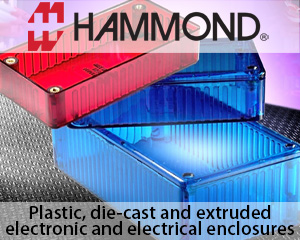
Infineon had participated at Smart Mobility Expo in New Delhi. At a pivotal moment for India’s automotive evolution, Infineon Technologies shares its vision for smarter, greener mobility. In this exclusive conversation, Girish Kamla, Senior Director and Country head of Sales – Automotive at Infineon Technologies and Kim, Chang Min, Marketing Director, Infineon Technologies Korea delves into their latest EV and hybrid innovations, semiconductor technologies, and support for local manufacturing. From advanced BMS and SiC/GaN-based solutions to AI-driven smart charging, the discussion covers how Infineon is shaping India’s mobility future while aligning with global sustainability goals and a strategic shift toward application-centric development.


Q: This is Infineon’s first appearance at Convergence India. What products are you showcasing and who is your target audience?
Mr. Girish: Yes, it’s our first time here. We’re focused on e-mobility—motor inverters, battery management systems (BMS), and onboard chargers (5kW, 10kW). We’ve also developed a new BMS Reference/Turn-key design using Infineon components. These designs are 50–75% production-ready, enabling customers to adopt them quickly and faster
Q: How is Infineon contributing to EV adoption in India?
Mr. Girish: As a leading semiconductor company with widest portfolio globally, we offer end-to-end solutions—from MOSFETs, gate drivers, power modules and microcontrollers to connectivity and security components like OPTIGA Trust. For instance, our TRAVEO microcontrollers support both infotainment and body control in vehicles.
Q: What innovations are improving power efficiency in EVs?
Mr. Girish: We’re innovating with new packages like TOLL and STOLL for better thermal efficiency and size reduction. Additionally, we’re moving from silicon to silicon carbide (SiC) and gallium nitride (GaN) devices for higher voltage and compact systems.
Mr. Kim: Especially with GaN, we’re offering bi-directional switches (BDS) that reduce the need for multiple components. For example, a U.S.-based customer used our bi-directional GaN for a micro-inverter application—an industry first.
Q: What EV trends are emerging in India?
Mr. Girish: In the 2W and 3W we are seeing higher penetration of EVs in PVs, In addition we are also seeing higher adoption of mild hybrids due to lack of infrastructure and cost. We’ve developed an 18-cell IC for 48V systems in 2- and 3-wheelers, and sensors like hydrogen and pressure sensors for battery safety.
Q: What infrastructure challenges does India face? How is Infineon helping?
Mr. Kim: Indian manufacturers face difficulty competing with low-cost imports. Our solution is system reference designs that are adaptable, cost-effective, and aligned with Indian use cases. This accelerates their time-to-market.
Q: How are you using GaN and SiC in your EV solutions?
Mr. Girish: SiC is being adopted in passenger car inverters for better range and efficiency. For 2/3-wheelers, Si devices are mainly used. GaN is gaining ground in chargers where space-saving is crucial.
Mr. Kim: We’ve also seen success with GaN in bi-directional switching and are exploring more applications for these technologies.
Q: Infineon has committed to carbon neutrality by 2030. How are you supporting that?
Mr. Girish: Sustainability starts at our manufacturing level—most of our plants run on renewable energy. At the product level, we’re integrating multiple features into single components to reduce system-level energy consumption. New technology and devices are focused on reducing thermals, higher efficiency and improving overall performance.
Q: What’s Infineon’s approach to vehicle-to-grid (V2G) and grid-to-vehicle (G2V) tech?
Mr. Kim: V2G is still evolving, with most current systems unidirectional due to policy constraints. Infineon supports both uni- and bi-directional systems with flexible power semiconductors.
Q: What’s new in sensor innovation from Infineon?
Mr. Girish: We have products in our portfolio to address majority of sensing requirements for all automotive applications. We’ve unified our sensor teams to focus on innovations like the hydrogen sensor for battery safety. We also provide radar, LIDAR, pressure sensors, and occupant safety sensors like ABS and airbag triggers.
Q: How do you see autonomous driving evolving in India?
Mr. Girish: Fully autonomous vehicles (Levels 4–5) are still a way off, but Level 2–2+ features like emergency braking and parking assist are becoming common in the new PV launches, two-wheelers some customers are evaluating their potential.
Q: Do you see more adoption of EVs or hybrids in India?
Mr. Girish: Both have space. Buses and last-mile transport are moving to full electric, while hybrids are growing due to infrastructure limitations. Electronics content is high in hybrids, which offers us more integration opportunities.
Q: Are you collaborating with Indian companies for local manufacturing?
Mr. Kim: Yes, we’ve signed an MoU with CDIL in Gujarat to manufacture semiconductors. This partnership is aligned with India’s “Make in India” mission and enhances competitiveness and technical expertise.
Q: How does Infineon leverage AI and edge computing?
Mr. Kim: Our microcontrollers (XMC, PSOC) support smart charging, AI, and cloud connectivity. We design them for specific applications—part of our shift to application-centric development rather than just product-centric.
Q: Any upcoming innovations we should watch for?
Mr. Girish: We’re continuously introducing new SiC and GaN-based products. Our goal is efficiency, cost reduction, and faster time-to-market with system-level reference designs.
Mr. Kim: Infineon is evolving from a product company to an application-centric company. Every team is now focused on solutions tailored for specific markets like EV charging, enabling quicker customer adoption.







